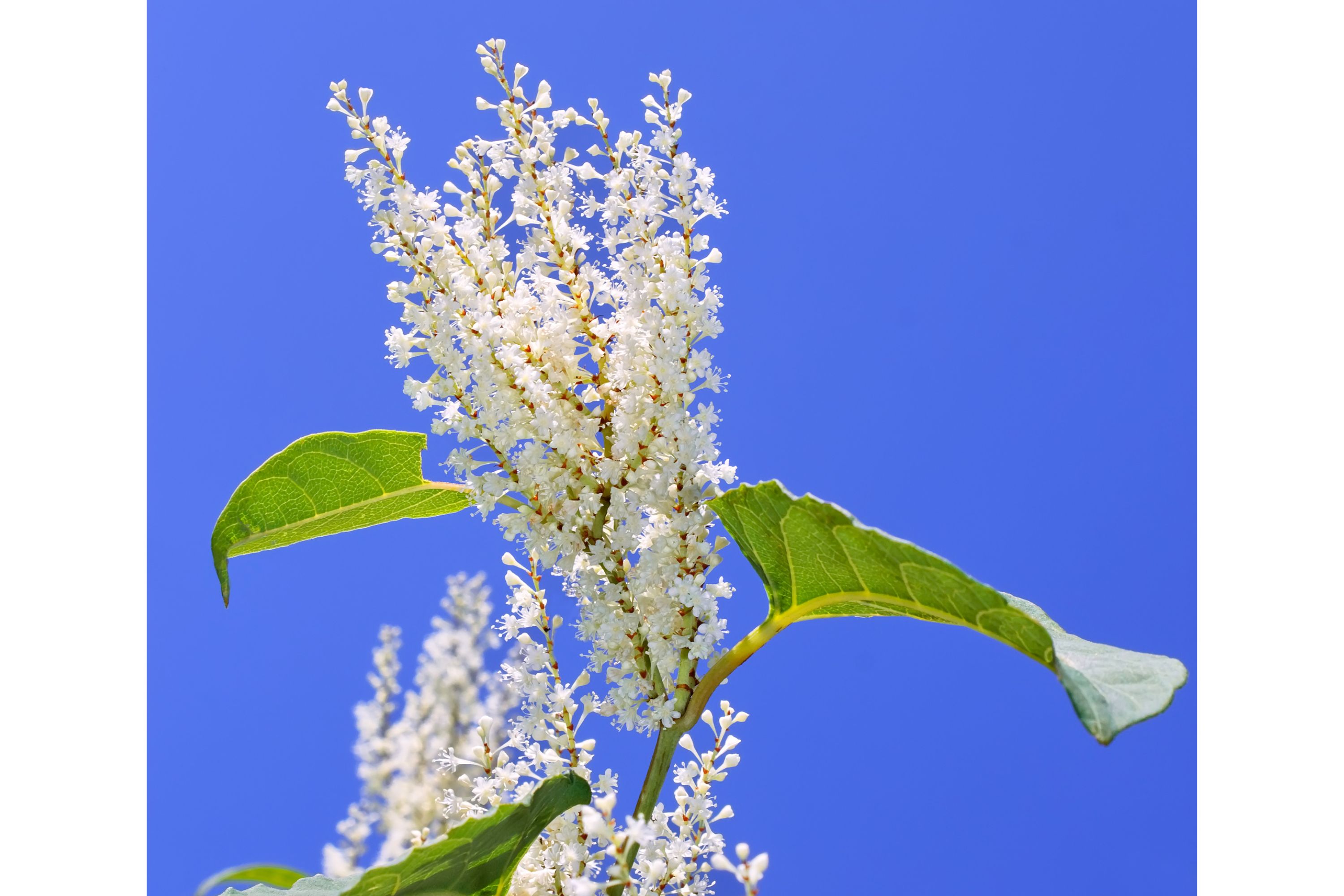Giant knotweed
(Reynoutria sachalinensis)

Description
Reynoutria sachalinensis, commonly known as giant knotweed, is a herbaceous perennial plant that belongs to the Polygonaceae family. This species is native to the island of Sakhalin, located in the Far East of Russia, but has now spread to other parts of the world, including Europe and North America. The plant is known for its impressive size and is often considered an invasive species due to its aggressive growth and spread. Taxonomy and Nomenclature: Reynoutria sachalinensis was first described by Johann Friedrich von Esenbeck, a German botanist, in 1851. It was initially classified as a member of the genus Polygonum but was later reclassified into the genus Reynoutria in 1947. The species name "sachalinensis" refers to the plant's native range on the island of Sakhalin, which is located in the Sea of Okhotsk and is part of the Russian Federation. Description: Giant knotweed is a tall, robust plant that can grow up to 4 meters in height. Its stem is hollow, and its leaves are broad, ovate, and pointed. The leaves can grow up to 30 centimeters long and 20 centimeters wide. The plant's flowers are small and greenish-white, and they grow in clusters at the end of the stems. The plant produces an extensive underground rhizome system, which can spread up to 3 meters in all directions, making it challenging to control. Distribution and Habitat: Reynoutria sachalinensis is native to the island of Sakhalin in the Far East of Russia. It has also been introduced to other parts of the world, including Europe and North America, where it is considered an invasive species. The plant prefers wetland habitats and can often be found growing along riverbanks, lakeshores, and wet meadows. It can also thrive in disturbed areas such as roadsides and abandoned fields. Ecological Impacts: Giant knotweed is considered an invasive species in many parts of the world. The plant's ability to form dense stands and outcompete native vegetation can have significant ecological impacts, such as reducing biodiversity and altering ecosystem functions. The plant can also increase the risk of erosion and flooding by destabilizing riverbanks. Control and Management: Due to its aggressive growth and spread, giant knotweed can be challenging to control. Mechanical methods, such as mowing and cutting, can be effective, but they need to be repeated over several years to exhaust the plant's energy reserves stored in its extensive underground rhizome system. Chemical control methods, such as herbicides, can also be effective but should only be used by licensed professionals. Careful consideration should be taken when using herbicides near water bodies as they can have adverse effects on aquatic life. Cultural control methods, such as planting native vegetation and restoring degraded habitats, can help to prevent the establishment and spread of giant knotweed. Uses: Despite its invasive nature, giant knotweed has several uses. The plant contains high levels of the chemical compound resveratrol, which has been shown to have anti-inflammatory and antioxidant properties. This has led to the plant's use in traditional medicine and as a dietary supplement. Giant knotweed is also used in the horticultural industry as an ornamental plant due to its impressive size and striking appearance. The plant's leaves can turn bright red in the fall, adding a splash of color to gardens and landscapes. Conclusion: Reynoutria sachalinensis, also known as giant knotweed, is a herbaceous perennial plant that is native to the island of Sakhalin in the Far East of Russia. It has spread to other parts of the world, including Europe and North America.
Taxonomic tree:







